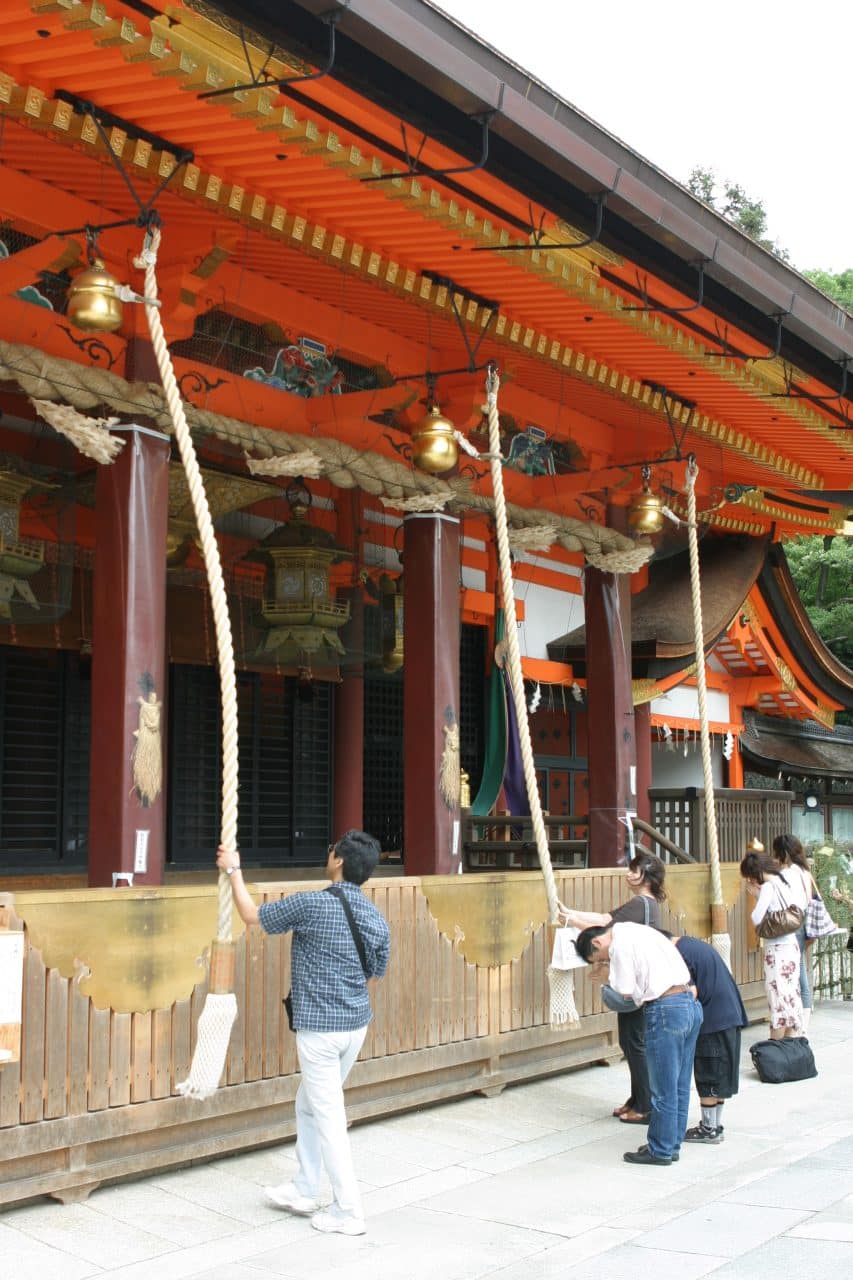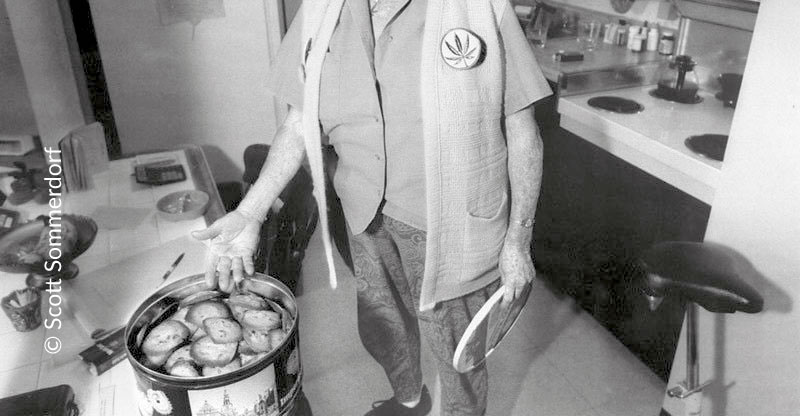Pulling it several times makes the bell ring. By doing so, the visitor attracts the attention of the kami and asks them to descend to the hemp suzuo, which serves as a kind of sacred conductor between the kami and humans. By ringing, you are purified before beginning prayer, paying reverence to the kami, or asking the kami for favour or assistance.
The custom of ringing bells while praying at shrines became a common practice after the war. The original custom was to worship by clapping hands.
Yamakawa, a speciality shop in Kyoto that traditionally makes objects for Shinto shrines, made the suzuo on display here especially for this exhibition.
Nusa
Nusa refers to the ritual tools used by Shinshoku (people who serve at Shinto shrines) during purification ceremonies (harae). They cleanse people, places or objects of sins and impurities. Nusa can also mean an offering to the kami. The word is derived from the kanji 麻.
Historically, the ritual objects 麻 (Nusa) have varied in size and shape and there is no uniformity in their use. There are different types, all of which are constructed slightly differently. Shiny, golden hemp bast (精麻) is one of the components of three types of nusa: Onusa, Konusa and Kirinusa.









